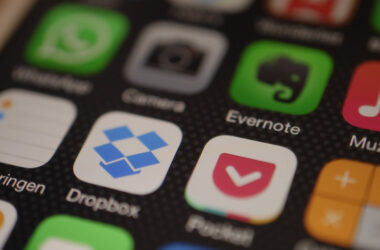I just spent about 4 hours trying to debug Day One’s syncing system.
Day One is the journaling app, built primarily for iOS but eventually made its way to the Mac, Android, and web. I’ve been using it for a full decade, initially to jot my thoughts down as a new dad but find it useful to write to myself about work, my hobbies, and life events as they happened. It won multiple design awards throughout the years, though in recent times, they were acquired by Automattic, the maker of WordPress.
When they released their custom sync engine back in 2015, we were starting to understand that the future of personal computing was multiple devices per user. In this model of computing, it was important to have apps across computing platforms plus services to keep data synced across all of them. It totally made sense for the Day One team to prioritize and then build their own sync service; they had already supported file syncs via Dropbox, and Apple’s iCloud was notoriously unreliable to boot1.
They were also able to use this syncing feature to shift from a one-time purchase business model to the now-familiar software subscription model. It’s gotten less controversial now to charge a subscription for software, but Day One took a lot of heat in making this shift in 2015; app prices were continually depressed due to how cheap the app store set its prices, but getting to long-term sustainability required charging much more on a reoccurring basis2. Nowadays, other apps use the same playbook to differentiate their subscription offerings—Things3, Bear, Obsidian, and most recently, Raycast—but they know to have a reasonably functioning, standalone free product as the baseline.
In 2023, though, file syncing is largely commoditized by the major operating systems. iCloud, Google Drive, and OneDrive are integrated into their respective operating systems, and at least the Google and Microsoft offerings are reasonably cross-OS-compatible. They’re all now reliable and scalable and have taken the boring approach of just charging for storage. Dropbox and Box are the products that have managed to survive, but they’ve had to orient their businesses strongly towards enterprise usage4 and building proprietary productivity tools that sit on top of shared, synced folders.
So most of these custom solutions were built before, or during, a time when OSs didn’t quite standardize their file-sharing services, and leveraged this added functionality to propel this transition from pay-once to subscription software. Latter apps have kept the same playbook, but most of them just piggyback off of a major sync service; dev time is better spent differentiating on more impactful features. The older apps, though, are kind of stuck with their bespoke syncing systems.
Admittedly, many of these syncing systems are legitimately faster than iCloud or Google Drive out of the box; they pass around data that’s smaller than entire files and don’t have to wait around to eventually get the update. The problem is that it’s then a service that has to be maintained; as with any piece of critical infrastructure, if you have to think about it, chances are it’s malfunctioning in some way. Syncing is particularly perplexing, as it’s a complicated operation to start, and errors tend to be opaque in consumer apps like Day One.
So I’ll keep hitting the “sync now” button and hope that it’ll find its way to the server. Eventually.
Apple eventually rebuilt their cloud services on top of AWS at a lofty price, but it has been much more stable as a result.↩
If memory serves, the apps were around $10 on each platform, but the annual subscription is $35/year.↩
The Things app also moved from a paid app → subscription, but their apps were considered productivity and were regularly in the $20–$50 range pre-subscription.↩
Dropbox, in particular, had to make the hard pivot after starting more on the consumer space, but endured a couple of consumer product flameouts.↩




